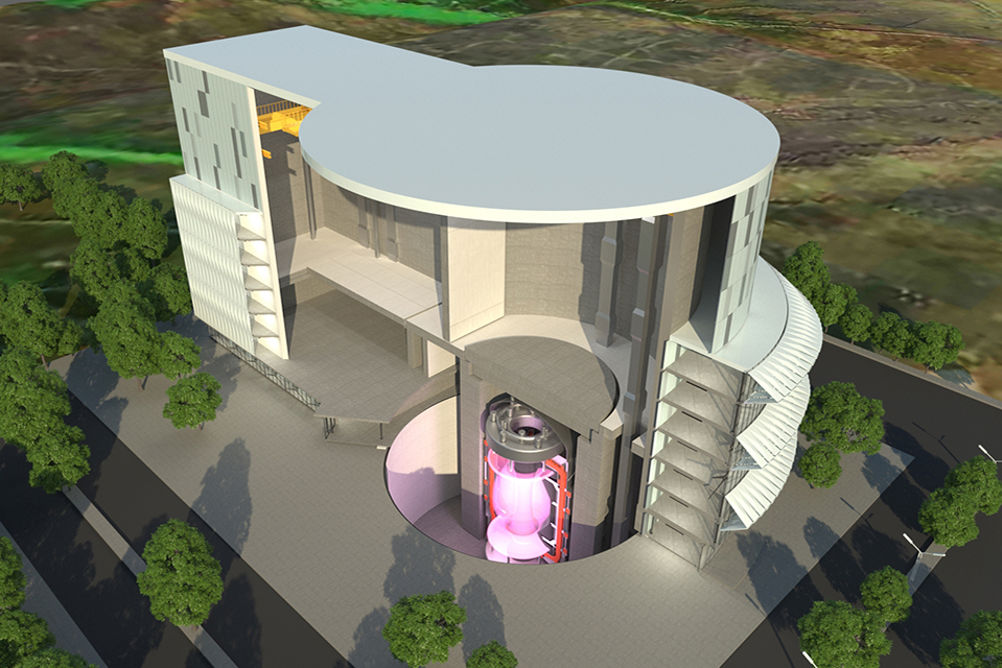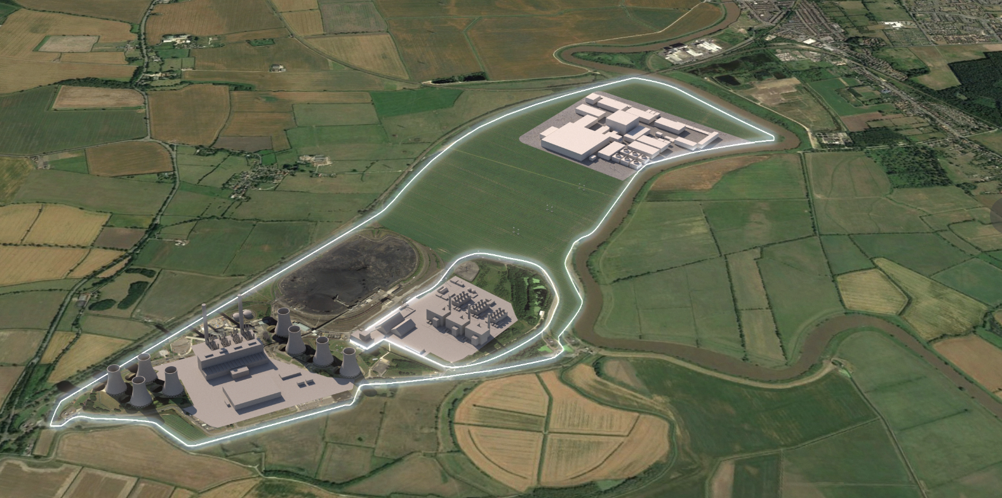As concerns over climate change and the state of the environment become ever more pressing, the need for cleaner, more sustainable energy is greater than ever, and according to nuclear engineer Fiona Harden, UK developments in the holy grail of energy - nuclear fusion - could have a major role to play.
Advances in renewable energy have, for the last decade or so, been undeniably positive. The National Grid recently reported that in the 12 months upto April 2024, 40.6 per cent of the UK energy mix was from renewables.
Renewables (encompassing wind, biomass, solar and hydro) is also the most cost-efficient form of zero-carbon electrical energy to date, and is currently predicted to be the lowest cost of any kind of energy generation in most markets by 2030.
The issue, though, is that renewable wind and solar energy generation, for instance, are non-dispatchable – and so only generate electricity when the weather allows, rather than when the country, or grid, needs it.
Outdated infrastructure and a lack of flexibility also mean that the grid cannot deal with fluctuations in renewable energy output. Thus, although advances are being made, insufficient energy storage and a lack of grid-scale balancing mechanisms mean that excess energy generated during peak production often goes to waste, while shortages can lead to a reliance on backup fossil fuel power plants or complete blackouts.
Fusion energy - although previously thought of as an unachievable goal - could be the answer to these issues in the not-so-distant future, and the UK is proving to be a world leader in its development.
The UK Atomic Energy Authority’s (UKAEA) Spherical Tokamak for Energy Production (STEP) project is a major technology and infrastructure programme aimed at delivering the UK’s first prototype fusion energy plant, and currently represents one of the leading projects in fusion research and development worldwide.
While nuclear fission – the reaction used in nuclear power stations currently – is the release of energy when a nucleus splits apart to form smaller nuclei, fusion is the reverse.
“Fusion energy is at the heart of the workings of the Universe. It is the process that powers the Sun and the stars, where light nuclei merge together to form a heavier nucleus, releasing energy,” Fiona Harden, STEP Hi-CrIS Technical Lead for UKAEA, told The Engineer.
To produce energy from fusion on Earth, Harden explained that a combination of hydrogen gases, namely deuterium and tritium, are heated to temperatures over 150 million degrees centigrade, 10 times hotter than the core of the Sun.
The gas becomes a plasma and the nuclei combine to form a helium nucleus and a neutron, with a tiny fraction of the mass converted into fusion energy. Indeed, a plasma with millions of these reactions a second can provide a great amount of energy from very small amounts of fuel. One kilogram of fusion fuel could provide the same amount of energy as 10 million kilograms of fossil fuel, according to the Culham Centre for Fusion Energy (CCFE).

Harden explained that this hot plasma will be controlled and confined by powerful magnets – specifically, in a ring-shaped magnetic chamber called a ‘tokamak.’
High energy neutrons, which contain the excess energy produced from fusion, will be captured and ‘slowed down’ or ‘cooled’ in a blanket around the plasma, thus producing heat. This heat will be used to create steam, to turn a turbine and generate electricity – just as with any conventional powerplant.
The process is said to be carbon-free at the point of generation, uses abundant fuels, produces less radioactive waste than fission, and has zero risk of a large-scale nuclear accident.
“STEP will demonstrate net energy from fusion, and will pave the way for the commercialisation of fusion energy – which has the potential to be a safe, low carbon and sustainable part of the world’s future energy supply,” said Harden.
Harden has followed something of an unconventional route into fusion energy. Though she originally applied to study purely Maths at Aberdeen University, she made a last-minute decision to take on some physics modules throughout her studies, before undertaking a PhD in bone replacement materials and bone degenerative diseases at the same university.
“I liked the crossover between academia and industry, and I didn’t want to pigeon-hole myself. I did a couple of years in the defence industry with BAE Systems, before ending up back in research as a Senior Research Fellow at CERN,” explained Harden.
Also known as The European Organisation of Nuclear Research, CERN operates the largest particle physics lab in the world. Its main focus is particle physics – the study of the fundamental constituents of matter – but research at the laboratory is much broader, ranging from nuclear and high-energy physics, to studies of antimatter and effects of cosmic rays on clouds.
While working at CERN’s High-Radiation to Materials (HiRadMat) facility, Harden oversaw a number of experiments ranging from work on collimators to investigations into thermal shock responses and damage limitations in Large Hadron Collider-type beams – the world’s largest and most powerful particle accelerator.
“I loved my time at CERN,” she said. “The environment taught me a lot about how to work with various different organisations, disciplines and nationalities. In my opinion, science shouldn’t have borders. For the majority of people in STEM, we want to work in a community, solve the fundamental reasoning of things, and ultimately help humanity – CERN was amazing at facilitating that.”

Now, as a Technical Lead engineer for the UKAEA, Harden is working towards developing a first-of-its-kind test rig named Hi-CrIS (High neutron fluence Cryogenic Irradiation of Superconductors). This rig will measure the effect of a fusion-relevant neutron spectrum on superconducting properties of the high temperature superconducting (HTS) tapes, that will be used in the STEP prototype plant to contain the burning hot plasma.
The Hi-CrIS rig is expected to be operational by 2026, when it will provide crucial results to inform the design of STEP’s superconducting magnet components, by cooling samples of HST tapes at the same cryogenic temperatures that these magnets will face.
When asked what drew her to the job, Harden said: “It was really the ethos of the overall STEP programme. Climate change is no longer something that people can ignore, and the work we’re trying to do here is so very important in counteracting the environmental damage already done.
“In order for us to be able to use fusion as a source of energy, we have to prove the concept of it, prove that it works. I’m proud to say that I’m working for fusion, working to help the climate and improve people’s lives. It’s a brilliant thing, but it’s not easy!”
Indeed, as the STEP programme moves from its first phase – to create a concept design of the prototype plant by March 2024 – to the next phase of developing a detailed engineering design by April 2025, the team faces a multitude of engineering challenges.
“Putting fusion electricity on the grid, both economically and reliably, requires finding and integrating technological solutions to several major challenges. These include using structural materials that withstand high energy neutrons and operate at high temperatures for thermal efficiency, deploying plasma facing materials that can withstand intense heat,” explained Harden. “As well as designing and manufacturing robust fusion components with these materials and perfecting robotics systems and robotics-friendly designs that minimise time taken for inspections and maintenance.”
Specific to the Hi-CrIS test rig, Harden added that it’s crucial that the materials used are able to withstand the cryogenic conditions – specifically 20 Kelvin, or around -250 degrees Celsius – equivalent to fusion conditions.
“We have to control the magnetic fields in these conditions. Again, it’s not an easy environment, and these kinds of tests with neutrons haven’t been done before – but that’s why the Hi-CrIS test rig is, in my view, going to be an extremely valuable rig. And that’s not just for fusion, but also hopefully for the superconducting and material science communities, for instance, too.”
Set to be built on an old site of a former coal-fired power station in West Burton, Nottinghamshire, STEP is targeting operation by 2040, and Harden is optimistic about the impact it will have. “I hope that [by then] we’ve succeeded in delivering net energy to the grid; that we’ve proved fusion is a sustainable, cheap and safe source of energy; and that we are leading an international progression to the commercialisation of fusion energy worldwide.
“But also, that we’ve used our programme to help other aspects in society that need it, too – helping the supercomputing, medical and space industries, for example. It’s a privilege and an honour to work on such an amazing project, with such amazing people, and I hope the ethos of the project remains the same: that you can solve anything with collaboration.”

Fiona Harden, Technical Lead Engineer for the UK Atomic Energy Authority.
More from The Engineer











Guest blog: exploring opportunities for hydrogen combustion engines
"We wouldn't need to pillage the environment for the rare metals for batteries, magnets, or catalisers". Batteries don't use rare...